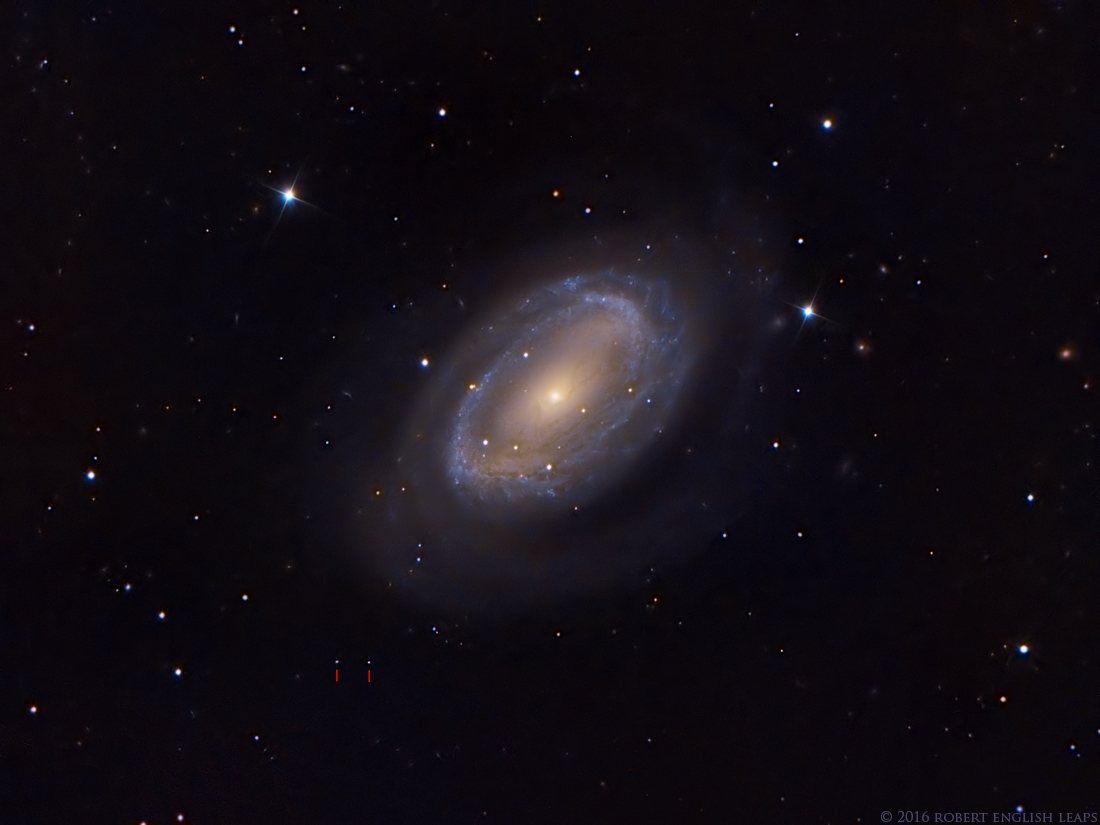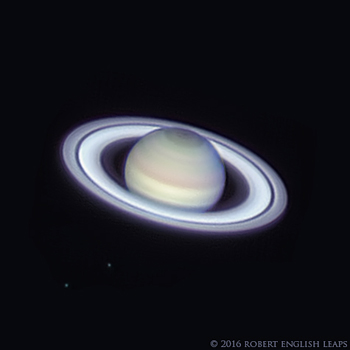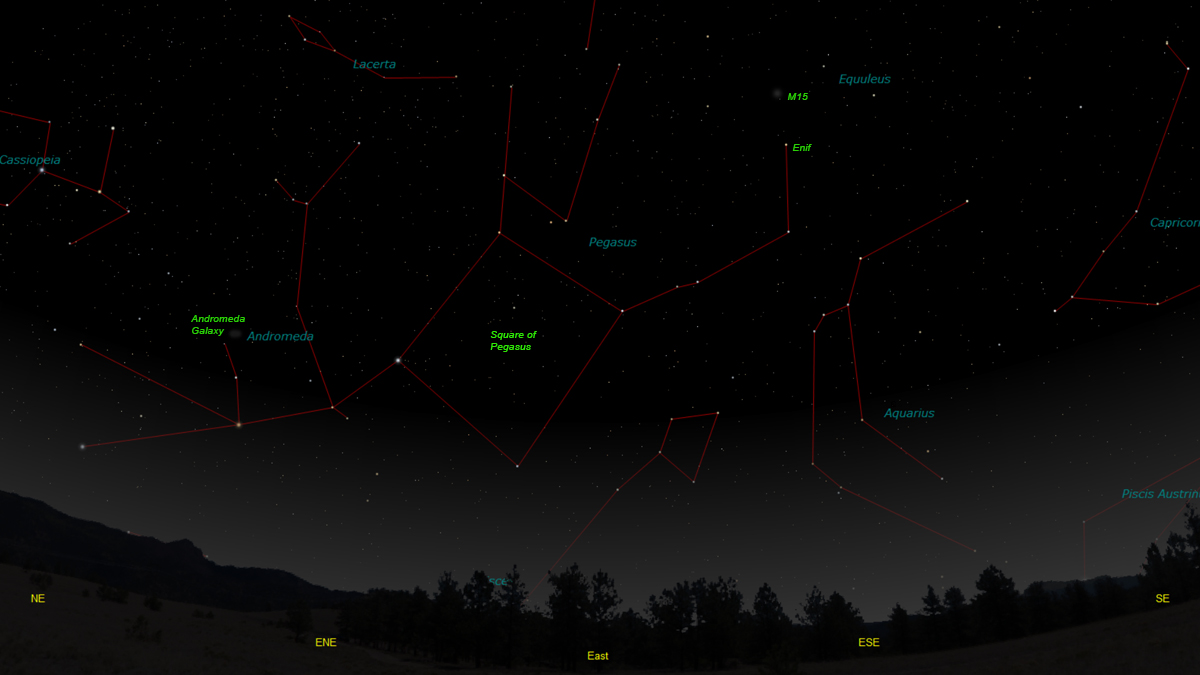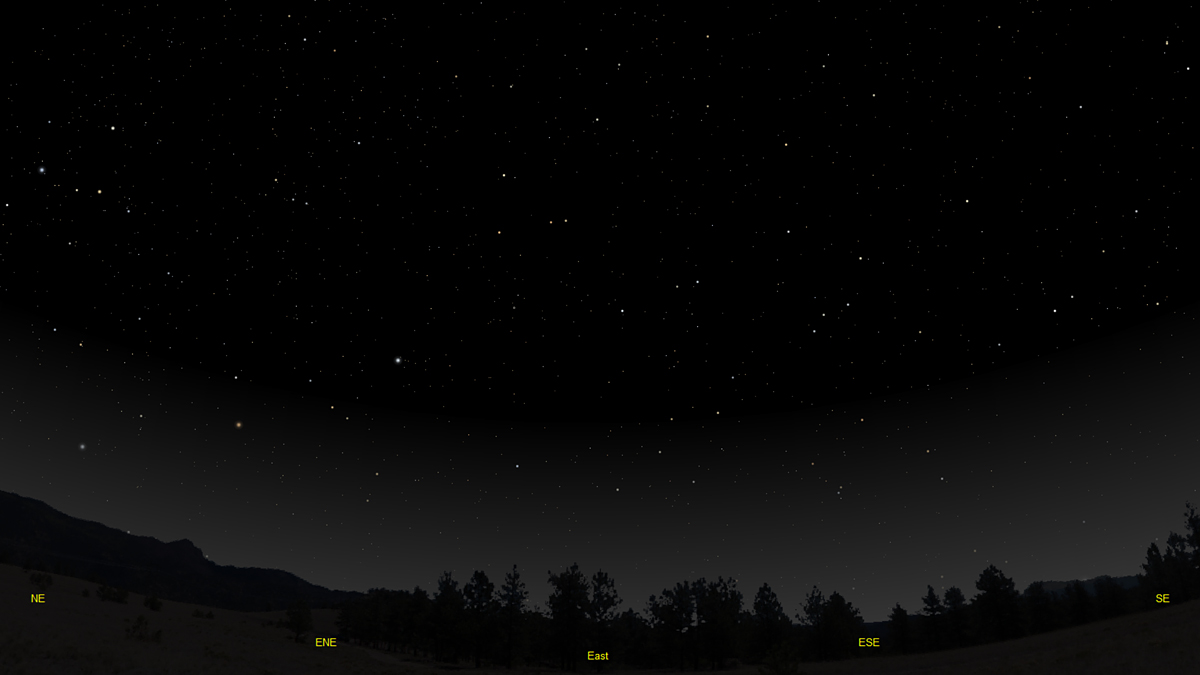The purpose of this feature is to give scout leaders, educators and naturalists an idea of some of the natural events coming up each month. We will try to cover a variety of natural events ranging from sky events to calling periods of amphibians, bird and mammal watching tips, prominent wildflowers and anything else that comes to mind. We will also note prominent constellations appearing over the eastern horizon at mid-evening each month for our area for those who would like to learn the constellations. If you have suggestions for other types of natural information you would like to see added to this calendar, let us know! Note: You can click on the hyperlinks to learn more about some of the featured items. To return to the Calendar, hit the "back" button on your browser, NOT the "back" button on the web page. All charts are available in a "printer friendly" mode, with black stars on a white background. Left clicking on each chart will take you to a printable black and white image. Please note that images on these pages are meant to be displayed at 100%. If your browser zooms into a higher magnification than that, the images may lose quality. Though we link book references to nationwide sources, we encourage you to support your local book store whenever possible.
Notes and Images From July 2016 Our image for July was started on the evening of June 29th and completed in the morning hours of July 1st. We have been looking for some time for an opportunity to image a trans-Neptunian dwarf planet. These small residents of the Kuiper Belt are quite distant. Pluto is the best known of these objects. Since they look just like faint stars in any earthbound image, I was hoping to catch one passing close to a fairly bright galaxy, just to make a more interesting image. I checked on a few of the brighter ones on June 27th and was amazed to find that one of them, the dwarf planet 136472 Makemake, was in fact passing close to the galaxy NGC 4725 in Coma Berenices. This little dwarf planet is only about 890 miles in diameter, less than half the size of our Moon. It is now over 52 astronomical units (one astronomical unit is the distance from Earth to the Sun, or about 93,000,000 miles) from the Earth. For comparison, Pluto is now about 32 astronomical units from Earth.
But there were several confounding factors. First of all, this is very late in the year to be imaging Coma Berenices. It did not get fully dark until almost 10:00pm, and by that time NGC 4725 was only about 51 degrees above the western horizon. That gave me only about 2 hours in which to image the galaxy before it descended into the murky and turbulent skies near the horizon. And the weather didn't look promising. It was predicted to be partly cloudy for the next several days, and then rain was predicted. But it was worth a try! I picked an orientation for the image where I thought Makemake (pronounced Maki-maki, short a and short i) would be visible on each night. and was lucky on the first night to have clearing skies that allowed me to get about 1-1/2 hours of exposure. The second night, the evening of July 30th, was more of a problem. When it finally got dark, there were clouds overhead and scattered clouds down to the western horizon. I waited until the galaxy was in a clear spot and started the telescope on its run. Even with the passing clouds, I managed to get an additional 1-1/2 hours of images, for a total of 3 hours. I was excited to see that in each 10-minute sub-exposure that the tiny 17th magnitude planet was bright enough to be seen easily. And the galaxy was bright enough that I was able to see both the inner ring and the very faint outer arm, which wraps around the galaxy like a fox's tail on a cold winter night. By averaging all of the sub-exposures on both nights, I ended with an image of the galaxy that showed the position of Makemake on both nights. Makemake was discovered in 2005 by Michael Brown and his team at Caltech. Because the discovery was made just after Easter, the code name for the planet was "Easterbunny." When it was time to formally name the planet, the team decided to name it after the creation god of the Rapa Nui people on, well, Easter Island. On April 26, 2016, it was announced that examination of images made by the Hubble Telescope revealed the presence of one moon about 100 miles in diameter. NGC 4725 is an interesting target in itself, and is bright enough that you have to wonder why it is missing from the Messier catalog. This intermediate barred spiral galaxy belongs to a subgroup of galaxies called "ringed galaxies." It is also a Seyfert galaxy, and is believed to have a supermassive black hole at its center. Its distance is around 40 million light-years. News flash! Just got word yesterday (August 12th) that the above image was chosen as NASA's Astronomy Picture of the Day (APOD)! Here's the link!
Sky Events for July 2016: The Perseid Meteor Shower peaks in the morning hours of August 12th. The Moon will be waxing gibbous, but it will set around 1:00am. leaving excellent conditions for the remainder of the morning hours. This is a broad-peaked shower, so you may want to also observe the evenings before and after. Because of perturbations to the shower's rubble stream caused by Jupiter, some believe this may be a particularly good year for the Perseids. Evening Sky: Jupiter is in Leo this month, and 20 minutes after sunset is only 19 degrees above the western horizon. With binoculars, you may be able to pick it out of the twilight glow, and if you look down and to the right of Jupiter, you may be able to pick out Mercury and Venus as well. Venus is only about 4 degrees above the western horizon, so binoculars will probably be necessary to see it. In between Jupiter and Venus, look for Mercury, which is about 8 degrees above the horizon. It should be fun to watch these planets move in relation to each other this month. Mars is in Libra as the month begins. Look for it about 30 degrees above the southern horizon at dusk. Mars will begin the month around 13 seconds of an arc in diameter, so it's still possible to get a view of some of the surface details.
Saturn is in Ophiuchus, to the left of Mars as you are facing south. Look for it about 36 degrees above the southwest horizon. The tilt of the rings has now opened to 26 degrees, and the view is spectacular in any size telescope. The planet transits around 8:32pm CDT. The globe of Saturn is now 17.5 seconds of an arc in diameter. Saturn is highest above the horizon about dusk, so if you're planning on viewing it with a telescope you'll want to view it as soon as it becomes visible in the southern sky. All times noted in the Sky Events are for Franklin, Tennessee and are in Central Daylight Time. These times should be pretty close anywhere in the mid-state area.
Constellations: The views below show the sky looking east at 10:00pm CDT on August 15th. The first view shows the sky with the constellations outlined and names depicted. Star and planet names are in green. Constellation names are in blue. The second view shows the same scene without labels. New constellations this month are Pegasus, the Flying Horse, Andromeda, Princess Andromeda, Triangulum, the Triangle, Pisces, the Fishes, and Aquarius, the Water Bearer. In Pegasus, the reddish star Enif marks the nose of the flying horse. Just above Enif is the globular cluster Messier 15, a nice ball of stars about 33,600 light-years away. The cluster was discovered by Jean Dominique Maraldi on September 7th, 1746. Maraldi was searching for De Chéseaux' Comet at the time. High overhead, in Hercules, another globular cluster is at its best this month. Messier 13 can sometimes be picked out with the naked eye on a dark moonless night. It is about 25,000 light-years distant. In a small telescope it will appear like a little cotton ball of faint light. With increasing aperture, you'll be able to spot some of the faint stars around the periphery of the cluster. Be sure to use averted vision, looking to one side of the cluster, to allow the cluster's light to fall on the light-sensitive rod cells of your eye. On Learning the Constellations: We advise learning a few constellations each month, and then following them through the seasons. Once you associate a particular constellation coming over the eastern horizon at a certain time of year, you may start thinking about it like an old friend, looking forward to its arrival each season. The stars in the evening scene above, for instance, will always be in the same place relative to the horizon at the same time and date each August. Of course, the planets do move slowly through the constellations, but with practice you will learn to identify them from their appearance. In particular, learn the brightest stars for they will guide you to the fainter stars. Once you can locate the more prominent constellations, you can "branch out" to other constellations around them. It may take you a little while to get a sense of scale, to translate what you see on the computer screen or what you see on the page of a book to what you see in the sky. Look for patterns, like the stars that make up the "Square of Pegasus." The earth's rotation causes the constellations to appear to
move across the sky just as the Sun and the Moon appear to do. If you go
outside earlier than the time shown on the charts, the constellations will be
lower to the eastern horizon. If you observe later, they will have climbed
higher. As each season progresses, the earth's motion around the Sun
causes the constellations to appear a little farther towards the west each night
for any given time of night. If you want to see where the constellations
in the above figures will be on September 15th at 10:00pm CDT, you can stay up
till midnight on August 15th and get a preview. The westward
motion of the constellations is equivalent to two hours per month. Recommended: Sky & Telescope's Pocket Star Atlas is beautiful, compact star atlas. A good book to learn the constellations is Patterns in the Sky, by Hewitt-White. You may also want to check out at H. A. Rey's classic, The Stars, A New Way to See Them. For skywatching tips, an inexpensive good guide is Secrets of Stargazing, by Becky Ramotowski. A good general reference book on astronomy is the Peterson Field Guide, A Field Guide to the Stars and Planets, by Pasachoff. The book retails for around $14.00. The Virtual Moon Atlas is a terrific way to learn the surface features of the Moon. And it's free software. You can download the Virtual Moon Atlas here. Cartes du Ciel (described in the monthly notes above) is a great program for finding your way around the sky. It is also free, and can be downloaded here. Apps: We really love the Sky Safari Pro application described here. For upcoming events, the Sky Week application is quite nice. Both apps are available for both I-phone and Android operating systems. The newest version, Sky Safari 4, is available here.A nother great app is the Photographer's Ephemeris. Great for finding sunrise, moonrise, sunset and moonset times and the precise place on the horizon that the event will occur. Invaluable not only for planning photographs, but also nice to plan an outing to watch the full moon rise. Available for both androids and iOS.
Amphibians:
Listen for Cope's Gray Treefrogs, Gray Treefrogs, Bird-Voiced Treefrogs, Green Treefrogs and Barking Treefrogs. Northern Cricket Frogs and Southern Cricket Frogs are still calling, as are American Bullfrogs and Green Frogs. Spring Peepers have a much higher, shorter call this time of year. On cooler nights listen for American Toads, but be wary of the many calling crickets this time of year. After heavy rains listen for the high, insect-like call of the Eastern Narrow-mouthed Toad and the strange-sounding Eastern Spadefoot. Recommended: The Frogs and Toads of North America, Lang Elliott, Houghton Mifflin Co
Archives (Remember to use the back button on your browser, NOT the back button on the web page!) Natural Calendar February 2016 Natural Calendar December 2015 Natural Calendar November 2015 Natural Calendar November 2014 Natural Calendar September 2014 Natural Calendar February 2014 Natural Calendar December 2013 Natural Calendar September 2013 Natural Calendar December 2012 Natural Calendar November 2012 Natural Calendar September 2012 Natural Calendar February 2012 Natural Calendar December 2011 Natural Calendar November 2011 Natural Calendar September 2011 Natural Calendar December 2010 Natural Calendar November 2010 Natural Calendar September 2010 Natural Calendar February 2010 Natural Calendar December 2009 Natural Calendar November 2009 Natural Calendar September 2009 Natural Calendar February 2009 Natural Calendar December 2008 Natural Calendar November 2008 Natural Calendar September 2008 Natural Calendar February 2008 Natural Calendar December 2007 Natural Calendar November 2007 Natural Calendar September 2007 Natural Calendar February 2007 Natural Calendar December 2006 Natural Calendar November 2006 Natural Calendar September 2006 Natural Calendar February 2006 Natural Calendar February 2003 Natural Calendar December 2002 Natural Calendar November 2002 Nature Notes Archives: Nature Notes was a page we published in 2001 and 2002 containing our observations about everything from the northern lights display of November 2001 to frog and salamander egg masses. Night scenes prepared with The Sky Professional from Software Bisque All images and recordings © 2016 Leaps.
|
|





